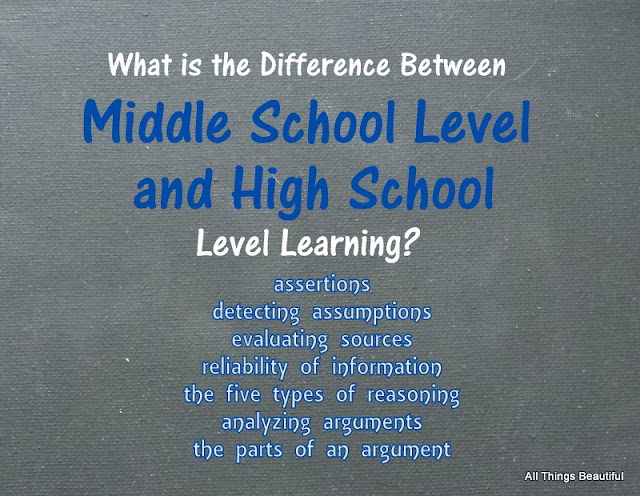Teaching Your Highschool Student About the 5 Types of Reasoning
Last week we talked about judging sources for reliability. This week we will look at judging resources for logical reasoning. There are five types of reasoning, which each have questions that need to be explored and answered:
Reasoning by Cause and Effect: Is the connection shown? Are there other possible causes?
Reasoning by Comparison: How are the arguments different and how are they similar?
Reasoning by Generalization: How large and representative is the sample?
Reasoning by Proof: Does the evidence support the point being made? How many examples are given? Is the authority an expert on this topic?
Reasoning by Debate: Does the writer attack other views in a fair way? Have all the possible alternatives been eliminated?
We will begin discussing this with a look at reasoning by cause and effect.
Reasoning by Cause and Effect
This is used when someone argues that something caused or will cause something else. This is often used in history studies but it is also a tricky thing to read and write about since causation is rarely simple and usually there are multiple causes for any historical event, so much so that you can pretty much conclude that if any historical event has only one cause, it is committing the single cause fallacy.
Another fallacy is the Post hoc, ergo proper hoc (after this, therefore because of this) which assumes that because B happened after A, then A caused B. A fallacy can also occur if a conclusion is reached that because A and B occurred at the same time, then one caused the other. These can both be addressed if the writer of the argument explains how A caused B. Lastly, a fallacy can occur if we predict an event might have or not have happened if another event had or had not happened. To avoid this, writers should stick to what actually happened rather than what might have happened.
Have your student look at an article that uses cause and effect and highlight the words caused, led to, forced, because, brought about, resulted in and reason for. Discuss with him about whether there was a reasonable connection between the cause and the effect. Ask him whether there could be other possible causes.
Have your student identify these fallacies in articles, and then have your student write his own cause and effect paper.
Next week we will look at Reasoning by Comparison and Contrast and Reasoning by Generalization.
Have your student identify these fallacies in articles, and then have your student write his own cause and effect paper.
What is the difference between middle school level and high school level level learning?
In high school students should be able to identify which level of reasoning is used in an article and be able to look for the possible fallacies with each of the types of reasoning. In this way, he can evaluate the article on a higher level than the middle school student who may or may not be convinced by an article's reasoning, but not know why or why not. The high school student can then write his own paper, using a particular article to back up his claims or to refute the claims of the article. This is practice for a college-level paper.Next week we will look at Reasoning by Comparison and Contrast and Reasoning by Generalization.


